The MDE15 works, selected by the artists to be exhibited in the conventional showrooms, will be set in the rooms of the Museo de Antioquia and its Casa del Encuentro (Meeting House), and the Casa de la Música de EPM (EPM Music House) located in the Parque de los Deseos (Park of Wishes). The MDE15 will also include some fleeting works made in different public spaces of the city.
The artists invited by the MDE15 under these two categories, alphabetically listed:
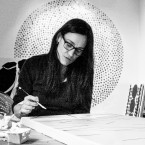 Emilia Azcárate
Venezuela
Emilia Azcárate
Venezuela
Between the cultural habit of consuming stimulant drinks –a vain mass consumption product nowadays- and an instrument of worship and mystical contemplation, Emilia Azcárate establishes a relationship between collective memories and simple objects and materials. Her works are ambiguous, indefinite between polarities: a mandala, an image that encourages introspection from geometric codes, is made up of locally collected, flattened and cut lids, and at the same time is a map of Medellin capturing not only a geographical but a cultural space, a local history. Through a similar procedure, an object made of cow dung, immediately connected to Hindu religious beliefs,…
Read more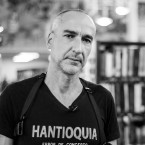 Fernando Arias
Colombia
Fernando Arias
Colombia
Arias has dealt with subjective issues like sexuality, religion and their political connotations. During the MDE15, especially in the public sphere, he will show the risk of losing direction in the processes of urban transformation when the idea of knowledge as an engine for change gets weaker and the continent stands above the content, the form above the actual pursuit of knowledge. His work highlights an unprecedented use of newspaper libraries in Colombia: the video records the action of turning over the books on the shelves of the public library Biblioteca Pública Piloto and this image is accompanied by the…
Read more Giuseppe Campuzano
Perú
Giuseppe Campuzano
Perú
Línea de vida (Lifeline) is an installation of the project Museo Travesti del Perú (The Peruvian Transvestite Museum) by Giuseppe Campuzano who proposed the creation of a queer, mixed, polluted counternarrative, related to the official history of Peru. Through an alternative museum model, where collecting objects, text, images and artwork is based on a thorough academic research, the project aims to disturb modern preconceptions which are inseparable from official institutions, especially in contexts with a strong colonial legacy. Over several years, and supported by multiple partners, Campuzano has performed several actions, dramas and publications challenging the place that the hegemonic…
Read more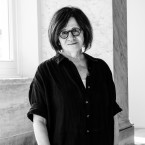 Gülsün Karamustafa
Turkey
Gülsün Karamustafa
Turkey
The work of this renowned Turkish artist has explored, with a rebellious and risky determination, the uneven historical status of women as a result of the roles they have been appointed to in their culture. It has also examined the transformation of their city because of political changes in the region. Illustrated History is a hand-stitched collage resembling a kaftan or tunic tied by a girdle, a symbol of power and wealth in the past. This work includes the storytelling of passages based on the presence of women. Stairway is a video of Romanian children who make a living as…
Read more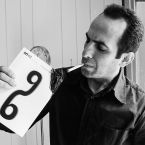 Halil Altindere
Turkey
Halil Altindere
Turkey
Since the mid-1990s, Altindere has emerged as one of the most prominent contemporary artists in the Turkish scene. His practice is multifaceted spaning from video to sculpture, photography, installation and performance, but also extending to collaborative editorial and curatorial projects. The work Wonderland is realized in collaboration with the hip-hop group Tahribad-ı isyan and is presented in the style of a music videoclip. The piece bears witness to the anger and frustration of a group of youths from the historic Sulukule neighborhood of Istanbul. The neighborhood is home to Romani communities since the times of Byzantine Empire but is being…
Read more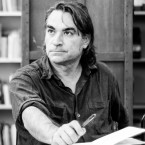 Jordi Colomer
Spain
Jordi Colomer
Spain
X-Ville praises the city as a space and a place of collective creation. This work explores and its huge supply of possibilities, its fertile nature for synergies and complementary relationships. It looks at its space, which is suitable for the emergence and fruition of ambitious and intimate initiatives that depend on the acceptance of the differences and the reconciliation of opposing interests. The content of the video addresses primitive survival gestures with their individual contradictions, the affectionate exchange and its complicated dimensions, and the meetings and discussions that constitute political life. Its resources and images honor the grace and sensitivity of the poetic texts and drawings of the architect Yona Friedman about the utopian uses…
Read more Jorge Alonso Zapata
Colombia
Jorge Alonso Zapata
Colombia
Much of his work provides documentary evidence of the life of a downtown area of Medellin known as Barbacoas. It is a place related to prostitution, drugs and danger. There are many cities like this around the world. They reflect the government policies, the priorities and mutual understanding of those who have the power. However, Zapata does not go deep into political speeches, he simply captures what he sees every day in bars and hotels in order to exhibit individuals who inhabit the city. We can see what we don’t want to see through a compassionate lens.
Read more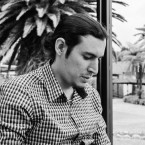 Jorge Andrés Marín
Colombia
Jorge Andrés Marín
Colombia
Artist collectives are formed as a response to voids that are found in the art system and in order to explore theories and concepts that fall outside of traditional conventions. To a greater or lesser extent collectives assume political positions. Jorge Andrés Marín presents us with evidence about the activities of an artist collective from Medellín called Grupo Centro. It was active between 1981 and 1995. By using different archival materials the artist constructs their history around real political situations and events. The artist shows us that, ultimately, history is a construction of declarations of facts and that reality is based on our belief in the truth of this evidence. With this installation Marín…
Read more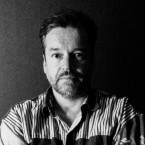 José Alejandro Restrepo
Colombia
José Alejandro Restrepo
Colombia
This project is related to the Medellín Supreme Court archives covering the first three decades of the twentieth century. Portrait photographs, crime scene sketches, pictures of weapons and descriptions made by legal experts and police officers, are part of these archives. Through different artistic practices they join other elements in order to present what Restrepo has called political anatomy and semiology of political violence in Colombia. Restrepo has used the figure of sacrifice as an inclusive element in previous works. It appears again to integrate heterogeneous narratives from different times and juxtaposed significant facts that exceed the simple collection and…
Read more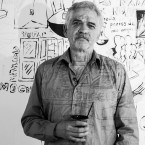 Juan Javier Salazar
Perú
Juan Javier Salazar
Perú
Salazar reworks with irony some elements belonging to the urban popular culture in Peru. His work includes diverse formats and actions in the public space. It encompasses handmade production of utilitarian objects and manufacture of ready-mades using precarious materials to express sarcastic remarks about social frameworks that are stuck according to his point of view. His work includes an ingenious common narrative that entwines the history of a place and myth in a hilarious way. Salazar has been invited to be part of the MDE15, halfway between a vendor and a popular character, by performing various interventions in spaces such as hairdressers, cafes, squares and streets of Medellín. The results of his interventions will be displayed…
Read more Juan Obando
Colombia
Juan Obando
Colombia
Obando works in cultural, social and political interstices looking for ironies and unexpected relationships that show weaknesses and special features of those systems. This artist uses social phenomena as a raw material in a critical and humorous way. For the MDE15, he intends to show two aspects of our society: In Military trucks, he instinctively investigates the extent to which armed conflict may be assimilated into a culture to the point that symbols of a military presence can become fun for adults. In Museum Mixtape, he explores the gap that normally exists between the community and the world of contemporary…
Read more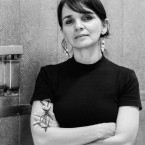 Libia Posada
Colombia
Libia Posada
Colombia
Being a doctor and an artist at the same time makes Libia’s inquiries more powerful. Her body-centered discourse displays drawings, installations, videos, photography and interventions in public or institutional spaces. In her own words, she assesses: “The problematic relationship among individual, collective, biological, existential, geographical and political body”. Her installation for the MDE15 includes a stretcher with oars, a photograph of a woman pushing her own stretcher into the sea and an aseptic and quiet area of a hospital. All these elements confirm the points of her poetry: critical ability and formal impeccability as instigators of thoughts. The absent body…
Read more
